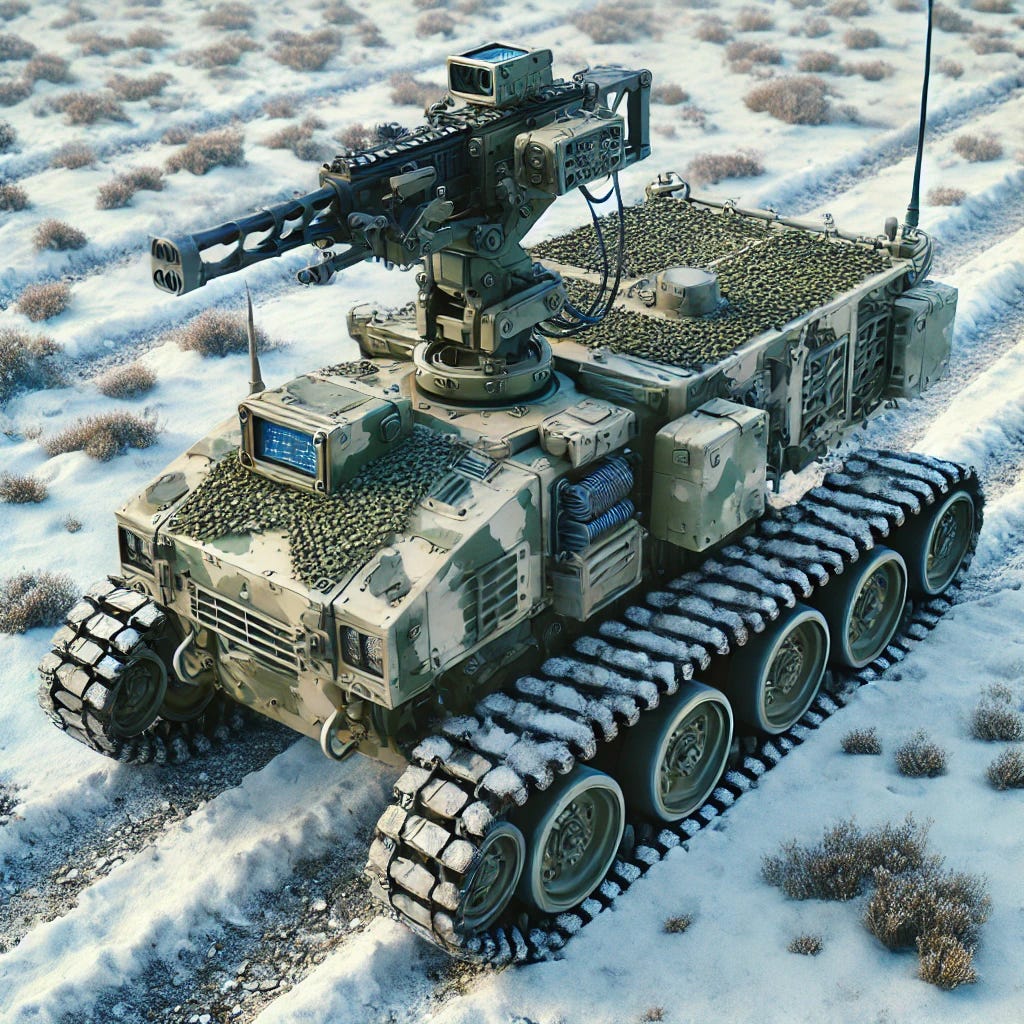The First Platoon-Scale Deployment of Combat Robots in Ukraine
Armed with Joysticks and Drones
According to The Sunday Times article, "Russian Men v Ukrainian Robots: Watch the Future of War Begin," in the Kharkiv region of Ukraine, a platoon-scale force of unmanned ground combat systems was deployed in an assault against Russian positions. Operated remotely by Ukrainian soldiers armed with joysticks and drones, these robots provided suppressive fire, maneuvered under enemy attack, and played a direct role in the engagement.
“This is the first time that Ukraine has launched an assault with a platoon-sized force of robots against the Russians,” reported The Times. It was a vision of the future of warfare, now unfolding in real battles.
A Shift in Combat Operations
The robots moved with precision, firing in coordinated bursts, laying explosives, and providing cover for advancing infantry. Operated by Ukraine’s 13th “Khartiia” National Guard Brigade, these units were deployed to “reduce the number of people we need in combat,” according to Second Lieutenant “Mathematician,” a PhD student turned military innovator.
Unlike traditional unmanned ground vehicles designed for reconnaissance, these systems were built for direct assault operations, combining:
AI-assisted targeting for rapid and precise fire,
Remote-controlled operation to keep soldiers at a safer distance,
Integration with aerial drones for real-time battlefield awareness and enhanced tactical coordination.
Challenges and Adaptation
Despite their success, these robotic forces faced challenges. Rough terrain, communication interference, and electronic warfare tactics remain obstacles. Two robots had to be manually retrieved after getting stuck or running out of power. Russian jamming efforts and signal congestion from multiple drones operating simultaneously created further complications.
Still, Ukraine is moving quickly to refine its robotic force. The platoon is collaborating with a Baltic nation known for its digital expertise, while global defence firms like BAE Systems and Rheinmetall closely monitor developments.
Oleksandr Kamyshin, a close adviser to President Zelensky, stated that Ukraine “will be able to field a robot army by the end of the year.” If this vision is realized, it could represent a fundamental shift in ground warfare.
What Comes Next?
The rise of robotic combat forces brings new strategic questions:
How will adversaries develop countermeasures?
Will the battlefield evolve into robot-versus-robot engagements?
How quickly will militaries adapt to the increasing role of machines in combat?
As The Times reported, Khartiia’s machines terrified Russian forces. “It’s just metal and machine shooting at you, hundreds of bullets, really precisely with AI,” said one Ukrainian soldier. “I can’t imagine how I’d react if I was there.”
We need to start imagining.
As robotic warfare evolves, understanding its operational, ethical, and logistical implications will be critical for future conflict readiness. Warfare is shifting at the frontlines.
Source: The Times, "Russian Men v Ukrainian Robots: Watch the Future of War Begin"


